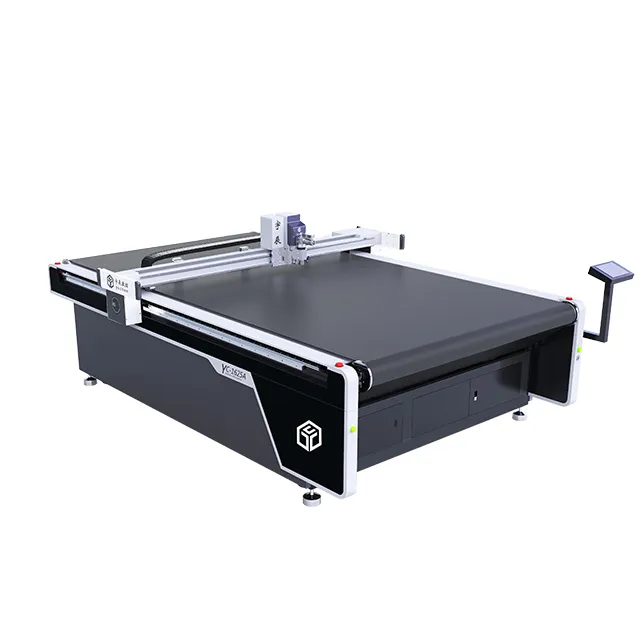The design of a footwear cutting machine can significantly impact its efficiency in several ways:
- Cutting Speed: The design of the cutting mechanism, including the type of blade, cutting path, and motion control system, influences the cutting speed of the machine. A well-designed cutting mechanism minimizes friction, vibration, and resistance, allowing for higher cutting speeds and increased throughput.
- Accuracy and Precision: A precise and accurate cutting system ensures that shoe components are cut to the correct dimensions with minimal deviation. The design of the cutting machine, including the rigidity of the frame, the precision of the cutting tools, and the control algorithms, contributes to achieving tight tolerances and consistent cutting quality.
- Material Handling: Efficient material handling mechanisms, such as conveyor belts, vacuum systems, or robotic arms, facilitate the loading and unloading of materials onto the cutting bed. The design of these handling systems influences the speed and ease of material positioning, minimizing downtime and maximizing productivity.
- Versatility: A versatile design allows the footwear cutting machine to accommodate a wide range of materials, thicknesses, and shoe designs. Modular tooling systems, adjustable cutting parameters, and customizable cutting paths enhance the machine’s flexibility and adaptability to different production requirements.
- Automation and Integration: The integration of automation features, such as computer numerical control (CNC), servo motors, and programmable logic controllers (PLCs), streamlines operation and reduces the need for manual intervention. footwear cutting machine A well-designed control interface enables seamless integration with other manufacturing processes, optimizing workflow and reducing cycle times.
- Waste Reduction: Efficient nesting algorithms and pattern optimization techniques minimize material waste by maximizing the utilization of cutting beds and reducing scrap. The design of the cutting machine should prioritize efficient material utilization while maintaining cutting integrity and minimizing production costs.
- Maintenance and Serviceability: A well-designed machine incorporates features that simplify maintenance tasks and reduce downtime. Easy access to critical components, standardized parts, and built-in diagnostics enhance the machine’s reliability and facilitate timely servicing and repairs.
- Safety Features: The design of the machine should prioritize operator safety by incorporating safety interlocks, guards, and sensors to prevent accidents and injuries. Clear labeling, ergonomic design, and intuitive controls contribute to a safe and user-friendly operating environment.
- Energy Efficiency: Efficient motor drives, power management systems, and energy-saving features minimize power consumption and operating costs. The design should optimize energy efficiency without compromising performance or cutting quality.
- Scalability: A scalable design allows the machine to accommodate changes in production volume, material types, and product designs. Modular construction, expandable features, and upgradeable software ensure that the machine can grow with the needs of the manufacturing operation.
Overall, the design of a footwear cutting machine plays a critical role in determining its efficiency, productivity, and overall performance. By incorporating features that prioritize speed, accuracy, versatility, automation, waste reduction, safety, serviceability, energy efficiency, and scalability, manufacturers can maximize the value and effectiveness of their cutting equipment in shoe production operations.
